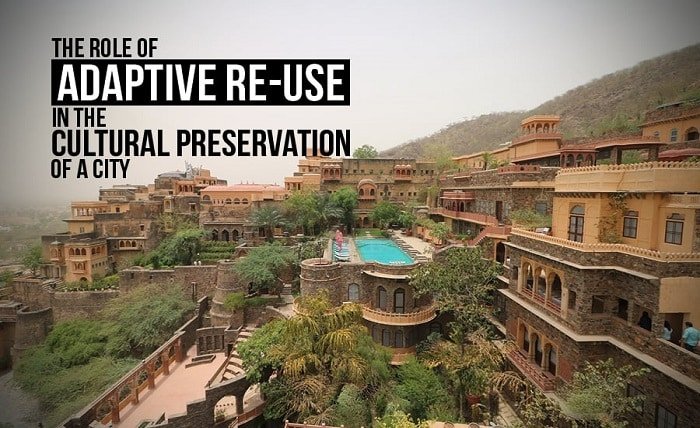Cultural Preservation in Adaptive Reuse: Protecting Heritage While Innovating

Adaptive reuse has become an essential strategy for revitalizing historic buildings, allowing them to serve modern needs while preserving their cultural and architectural heritage. Ballast Investments, a real estate investment firm managing a $2 billion portfolio, exemplifies how thoughtful planning and collaboration can turn these challenges into opportunities. As urban areas grow and space becomes limited, developers face the challenge of integrating contemporary functionality into historical structures without compromising their significance. Successfully balancing cultural preservation with innovation ensures that historic buildings remain relevant and valuable to present and future generations.
The Importance of Cultural Preservation in Adaptive Reuse
Preserving cultural heritage through adaptive reuse is vital for maintaining a city’s identity and historical continuity. Historic buildings often embody the architectural styles, craftsmanship and social narratives of their time. Adaptive reuse allows these buildings to retain their historical significance while contributing to economic development and sustainability. By repurposing old structures, developers can reduce demolition waste, minimize environmental impact and celebrate architectural craftsmanship that might otherwise be lost.
Additionally, restoring historic buildings enhances community pride and fosters a sense of place by keeping familiar landmarks intact. These projects also boost local economies by attracting tourism, new businesses and residents who appreciate the character of preserved architecture. Many adaptive reuse developments incorporate public spaces, such as cultural centers, parks or marketplaces, further enriching urban life. Advances in preservation technology, such as laser scanning and digital modeling, allow for accurate restoration while integrating modern functionality.
Adaptive reuse also encourages walkable, mixed-use environments that support local businesses and reduce reliance on cars. In many cases, preserving and repurposing historic buildings increases property values and stimulates neighborhood revitalization. Public-private partnerships often play a key role in financing these projects, ensuring they remain economically viable while serving the community. Ultimately, adaptive reuse transforms cities into dynamic, livable spaces that honor their past while embracing the future.
Challenges in Balancing Preservation and Modernization
One of the primary challenges in adaptive reuse is ensuring that modern upgrades do not overshadow a building’s historical essence. Retrofitting for energy efficiency, accessibility and safety often requires structural modifications, which must be carefully executed to maintain the building’s character. Developers must navigate strict preservation regulations, zoning laws and public expectations while integrating contemporary design elements that complement the original aesthetic.
Additionally, some historic materials and construction methods may not align with modern safety codes, requiring creative engineering solutions to reinforce buildings without altering their defining features. Engaging preservation specialists, architects and engineers in the planning process helps ensure that adaptive reuse projects respect the integrity of historic structures while meeting current standards.
Successful Strategies for Cultural Preservation in Adaptive Reuse
Developers and architects have employed various strategies to preserve cultural heritage while making historic buildings functional for modern use. One approach is facade retention, where a building’s exterior remains intact while interior spaces are reconfigured for new purposes. This technique allows for modern upgrades without diminishing a building’s historical presence in its urban context.
Another strategy is material conservation, where original materials such as brick, wood and ironwork are carefully restored and reused. This not only preserves a structure’s authenticity but also promotes sustainable building practices. Additionally, adaptive design integration, which respectfully blends contemporary additions with historic elements, enables buildings to evolve without erasing their past.
Examples of Culturally Sensitive Adaptive Reuse
Many successful projects worldwide demonstrate the effectiveness of integrating modern functionality with cultural preservation. For example, industrial warehouses have been transformed into artistic and commercial hubs, maintaining their historic facades while repurposing interiors for modern enterprises. Former churches have been adapted into community centers, preserving stained glass windows and vaulted ceilings while creating multifunctional spaces.
Historic hotels and government buildings have also been reimagined as mixed-use developments, offering residential and commercial spaces while respecting their historical significance. These examples highlight how adaptive reuse can sustain cultural identity while fostering economic and social revitalization.
Ryan Brewer, Ballast Investments Co-Founder and Managing Principal, remarks, “Sustainability is a differentiator in today’s market. Tenants and investors alike are drawn to properties that demonstrate a commitment to environmental stewardship.” This insight highlights how cultural preservation and sustainability are intertwined, making adaptive reuse a compelling strategy for investors and urban developers.
The Role of Public-Private Partnerships in Cultural Preservation
Public-Private Partnerships (PPPs) play a critical role in supporting culturally sensitive adaptive reuse. Governments and preservation organizations often provide financial incentives, such as historic tax credits, grants and zoning exemptions, to encourage developers to invest in preservation efforts. Collaborative projects between private investors and cultural heritage agencies ensure that redevelopment aligns with historical conservation goals while remaining economically viable.
Additionally, involving local communities in the planning process fosters a sense of ownership and appreciation for restored landmarks. Public engagement through forums, surveys and educational programs can strengthen support for adaptive reuse projects and ensure that they reflect the area’s cultural values.
Collaborating with local artisans and historians can further enhance authenticity, preserving craftsmanship and historical details that make these buildings unique. When communities feel connected to revitalized spaces, they are more likely to support and maintain their long-term success, fostering a lasting legacy for future generations.
Future Trends in Cultural Preservation and Adaptive Reuse
As technology advances, innovative preservation techniques are emerging to facilitate adaptive reuse. Digital documentation and 3D modeling allow architects to create precise restoration plans, minimizing disruption to historical elements. Sustainable retrofitting solutions, such as non-invasive insulation and climate control systems, enable energy efficiency without compromising heritage integrity.
Furthermore, there is a growing emphasis on experiential and mixed-use spaces, where historical buildings serve multiple functions, blending cultural exhibitions, residential units and commercial establishments. These trends highlight a shift towards making heritage buildings not just relics of the past but active, dynamic contributors to contemporary urban life.
Cultural preservation in adaptive reuse requires a thoughtful approach that respects history while embracing modernity. By employing innovative design strategies, leveraging public-private partnerships and integrating cutting-edge preservation technologies, developers can honor the past while ensuring that historic structures continue to serve evolving societal needs. As cities grow and adapt, striking this balance will be key to sustaining cultural heritage and enriching the urban landscape for generations to come.




